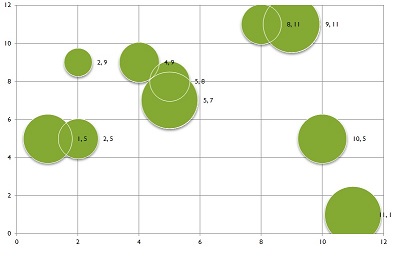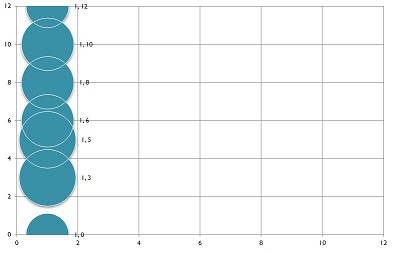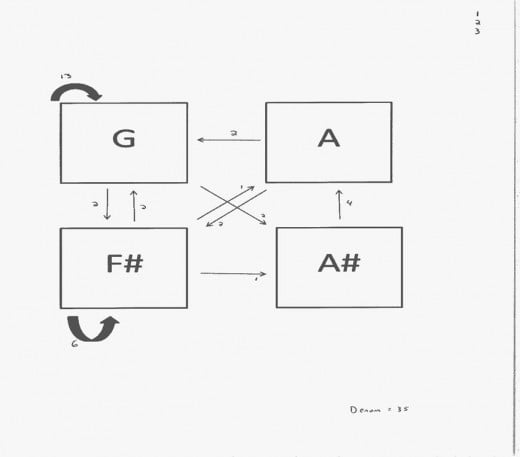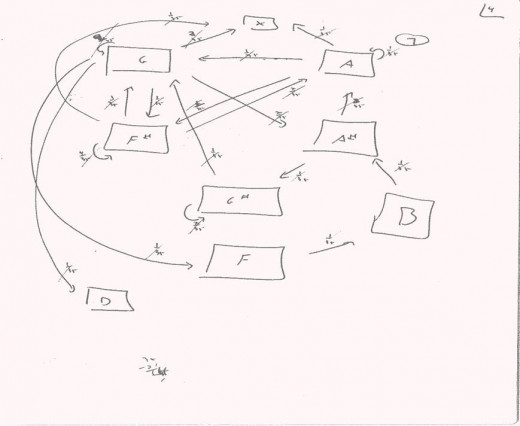Heavy Metal Guitar Solos -- an analysis for fun

So part of the description of my page is "metal," and yet I have nothing up yet on that genre of music. Bad James! However, I am working on several articles right now, some I will publish here and some that will be published in journals and books (which I will share if allowed to, but it depends on copyrights). These range from in-depth analyses of how guitar solos change over time to some ethnographic looks at folk music.
In the meantime, here are a few little bits on some of my own soloing, something which I have become moderately decent at with 37 years of practice. I have three main styles of soloing: basing the notes around the major chord, popping around on an open string, and finger tapping. I'm currently working on arpeggios -- I incorporate them, but I feel it needs more work.
Also added are some short video snippits of the solos. I threw them together rather quickly, but that doesn't mean you can't comment on them with helpful hints below. ;)
Open G string solo -- Take 1
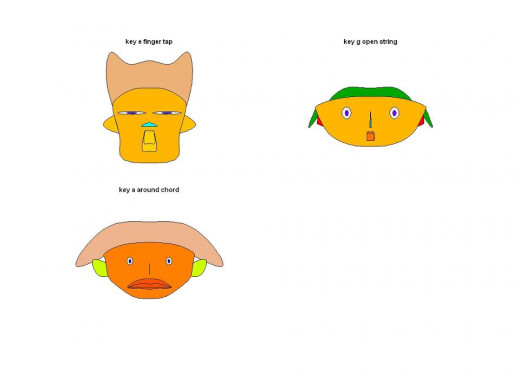
Chernoff Faces
Chernoff faces take data from a set of variables and translates it into "human faces." In my case, I used five variables: tempo, number of root notes played, number of third notes played, number of fifth notes played, and the number of special techniques (hammer-ons, pull-offs, bends, taps, etc.).
I'm not entirely sure that the program didn't instead use the look on my friends' faces when I try out a new solo.
Pitch Distributions
Pitch distributions look at consecutive pairs of notes and counts the frequency of pairs (i.e. A-A, A-A#, A-B, ..., G-G#). There are several different things one can do with these, but here I'm sharing the bubble plots that show the difference in how the pitch-pairs are utilized.
The data have also been normalized by key, so the graphs match directly up without worrying about the differences in pitch differences that are natural in songs with different keys.
If you're wondering why it goes from 0 to 11, it's based on the 12 notes of the music scale (modulo 12).



Finger Tapping -- take 1
Markov Chains
Markov Chains are a statistical tool used to check on probabilities of going from one state to another. Rather than go into the math details, I'll just explain that I used it to see how beer affected my playing. I drank 11 ounces of Stone Old Guardian barleywine (half a bomber of 22 oz) that clocks in at 12% ABV every 10 minutes, at which each time I replayed the same Irish jig tune.
The first picture shows a sober version. After an hour, and three really strong huge beers, you can see how messed up the Markov chain became.
The entropy, a measure of information, of my experiment also increased quite a bit. :)


I'm happy to go into a lot more depth of the statistical methods, but I'll wait until I get a comment below to do so. Until then, I see no point in disturbing everyone with it. I hope you enjoyed this taste of metal and math. Next time, it'll be something more cultural. I promise.
And if I get around to it, I'll add some video of the soloing techniques.
A Chord -- take 4 ;)
© 2015 James Slaven


